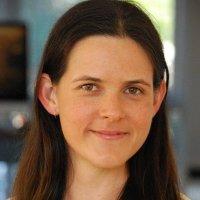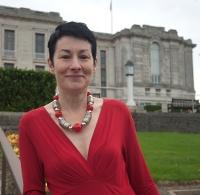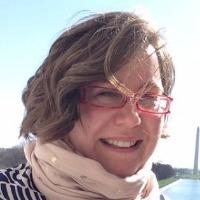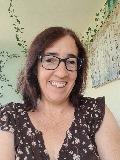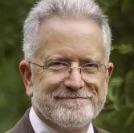Blog
Unless otherwise stated, content is shared under CC-BY-NC Licence
Advocating for advocacy
DPC members might remember some work we (on the Advocacy & Communications Sub-Committee) started a while ago to create an ‘Executive Briefing Pack’…?
Born out of calls from the Coalition’s membership for more resources to support internal advocacy, the Executive Briefing Pack would sit alongside the Digital Preservation Handbook and the Digital Preservation Business Case Toolkit, providing easy access to the straightforward points that need to be understood before decisions on preservation policies can be made and implemented.
Within the pack, a ‘grab bag’ of handy ready-made goodies would enable digital preservationists across all sectors and organization types to create a tailor-made document/ presentation/ letter/ campaign (delete as applicable) to persuade whoever needed persuading within their organisation that DIGITAL PRESERVATION IS A GOOD THING!
Australasia Preserves: Establishing a digital preservation community of practice
On February 16 2018, The University of Melbourne Library Digital Scholarship team organised and hosted the inaugural “Australasia Preserves” event. This event brought together 75 people interested in digital preservation in Australia and New Zealand, from a variety of different institutions and organisations.
Our goal was to start to build a community of practice for digital preservation in our region for all interested people and organisations, regardless of institutional affiliation or skill level. We’ve wanted to get a community like this together for a while. Because we are a very small team working on a very big digital preservation project, we have a keen interest in generating greater connections with other digital preservation initiatives, projects, and work being done, and in exploring opportunities for collaboration.
Your sub-committee needs you!
Words by William Kilbride and Sarah Middleton
In the last few months, we’ve seen a fair bit of ‘newness’ at the DPC: a new chair, a new strategic plan and a new structure have all set us on an exciting path for the coming years. And the new structure and strategic plan, in particular, bring with them new opportunities for DPC members to become more involved in what we do and how we do it.
You may recall that the DPC has a number of sub-committees that help oversee our work and keep us focussed on member needs. There are currently four sub-committees covering our six main areas of work. These are:
- Community Engagement: enabling a growing number of agencies and individuals in all sectors and in all countries to participate in a dynamic and mutually supportive digital preservation community.
- Advocacy: campaigning for a political and institutional climate more responsive and better informed about the digital preservation challenge; raising awareness about the new opportunities that resilient digital assets create.
- Workforce Development: providing opportunities for our members to acquire, develop and retain competent and responsive workforces that are ready to address the challenges of digital preservation.
- Capacity Building: supporting and assuring our members in the delivery and maintenance of high quality and sustainable digital preservation services through knowledge exchange, technology watch, research and development.
- Good Practice and Standards: identifying and developing good practice and standards that make digital preservation achievable, supporting efforts to ensure services are tightly matched to shifting requirements.
- Management and Governance: ensuring the DPC is a sustainable, competent organization focussed on member needs, providing a robust and trusted platform for collaboration within and beyond the Coalition.
Preserving the Welsh Record: A bit at a time
Sally McInnes is Chair of the ARCW Digital Preservation Group and Head of Unique Collections and Collections Care at the National Library of Wales
On International Digital Preservation Day last year, the Archives and Records Council Wales (ARCW) published the first national digital preservation policy. The policy was produced in recognition of the significant strategic challenge which digital preservation presents to organisations in Wales which are creating, providing access and preserving digital information. The policy also aims to raise awareness of the importance of effective digital preservation amongst archive institutions, practitioners and managers, through stressing that transparent, responsible and accountable activity relies upon the ability to evidence decision making and to provide a reliable audit trail.
Let's Get Together and Feel Alright.....
The Digital Preservation community is growing. The DPC adding its 74th member this month (we’ve doubled in size over the past 5 years) is a good example of this. But it’s not just about absolute numbers. International Digital Preservation Day showed that the growth is multi-faceted, with geographical and sectoral expansion being the most obvious changes. Sooner or later we’re going to be confronted with a serious test: how can a small community become a big community while still being welcoming? Is it possible that we can learn from other communities? I’ve been thinking about how I can draw from my experiences beyond my work life to help answer these questions.
Sic Transit Gloria Digitalis: The BitList in Beta
I spent most of the latter half of November locked in a life or death battle with Microsoft Excel, arranging, sorting and making sense of entries to the BitList. I seem to have survived this ordeal-by-spreadsheet, even if myriad little boxes containing doubtful formulae dance restlessly through the half-darkness of my closed eyes.
The BitList is a simple enough proposition - a list of digital content and types that are called out for special attention because the digital preservation community has particular concerns over them. It’s a list created by open invitation to the whole digital preservation community and validated by an international expert panel drawn from the DPC membership. The impact is immediate but also, because, the DPC will maintain over the longer term we can move things up and down and in that way we can track progress over the long term too. The BitList therefore means we can identify honest-to-goodness problems and we can celebrate when those problems are resolved.
Digital Preservation with Time-Based Media Conservation, TATE
Louise Lawson, Patrica Falcao, Chris King and Ana Ribeiro, Time Based Conservation Team, Tate
We have been looking at different aspects of digital preservation for over 10 years now and looking back it is quite exciting to see how far as an institution we have come on our digital preservation journey. This is now coming to a head, as we establish our archival digital storage infrastructure and continue the development of the open source web-application Binder for managing our digital repository. We have set-up a test environment and work with Binder will continue over the coming months, so do watch for future updates.
In parallel with these larger projects, of establishing our archival storage and developing Binder, we have also continued to take smaller steps looking closely at the processes and tools to support our workflows. For instance setting up our workstation with a write blocker and ensuring that our temporary storage, or Interim Storage, meets the minimum requirements for storage of high value digital assets. As part of our digital storage infrastructure we have felt the need for a storage server where we can quickly back-up any digital files provided by an artist before we start any of the selection, quality assessment and archival storage processes that make up our acquisition process. In 2017 our Information Systems department set-up our “Interim Storage”. This is meant to be a first port when a hard-drive arrives to us from an artist, so we can create a copy immediately before we need to make any decisions. As part of that workflow we want to ensure, when accessing hard-drives, that we don’t change them, or unduly delete them.
What exactly did I get up to last year?
Another year flies by very quickly. Happy 2018!
Always a useful time to sit back and think about what was achieved last year.
So I started off the year with an ambitious list of things that I wanted to achieve (note to self - *never* do that again!)
As usual I had a mixture of successes and setbacks. All of this helps contribute to both my own understanding about how to work effectively in digital preservation and hopefully the shared understanding of the wider community.
Though I might not have ticked off everything on the list, looking back at the year there was certainly some useful things to come out of it.
APTrust and the Draft Declaration of Shared Values
Chip German is program director of the Academic Preservation Trust, and he is senior director for content stewardship and scholarly communication at the University of Virginia Library.
Hello to the DPC community from the Academic Preservation Trust. As some of you know, we’re a consortium of US-based university libraries at research-intensive institutions working together to do digital preservation of the academic and cultural record at scale.
I won’t bore you with background that you can see at our website (http://aptrust.org), including our recent assessment of where we need to focus after three years of operating a non-profit, collaborative, cloud-based repository (you can find this year’s directions at http://tinyurl.com/ybmuczgq). Instead, I think this may be a useful starting point: we’re experiencing healthy, rapid growth in deposits of content (from 22.6 terabytes last April to 54.3 terabytes on January 9), and that is still nowhere near enough. We are also both an ingest and a replicating node of the Digital Preservation Network (DPN), which is showing its own impressive growth in deposits, but nowhere near enough.
Bit by bit: Processing Born Digital Accessions at National Records of Scotland
Jenny Hunt is the Digital Archivist for the National Records of Scotland Digital Records Unit.
Like many other institutions worldwide National Records of Scotland (NRS) is grappling with digital preservation and finding a solution which will allow the Keeper of the Records of Scotland to carry on his duty to preserve the records of Scotland into the future in a digital age. Our Digital Preservation Programme is currently working on a new digital infrastructure on which to build its repository – so how are we preserving archival digital material in the meantime?
NRS first received archival born digital records in 1998. Since then we have amassed almost 1.07 million digital files in over 130 accessions. We began a formal process of quarantining accessions in the late 2000s, copying each transfer on to a standalone pc with virus-checking software which was updated weekly and scanning it once a week for a period of four weeks. A duplicate of the accession was then produced and sent to off-site storage.











































































































































